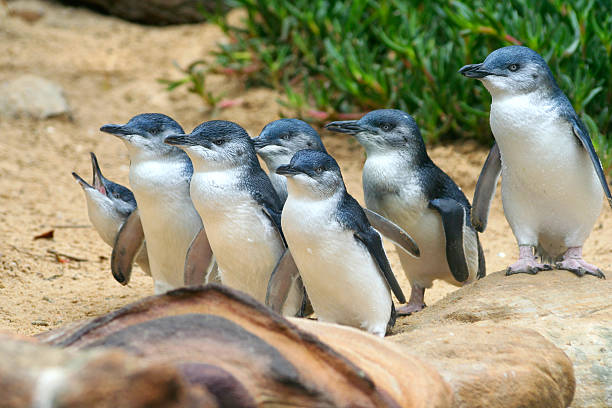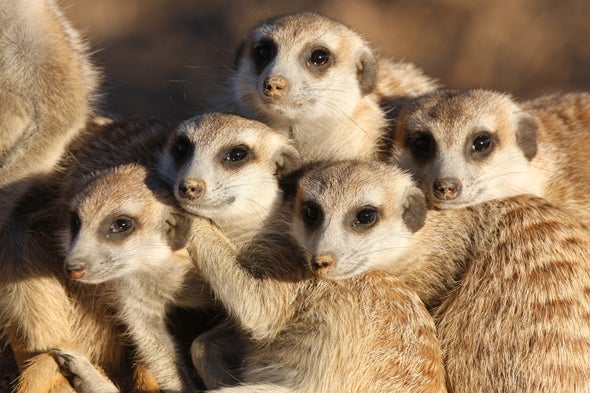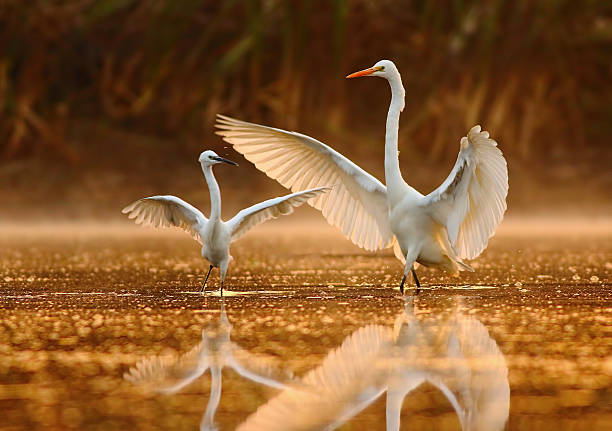Little penguin
INTRODUCTION
Hi, I am a little penguin. We are mainly blue-gray birds, the smallest species of penguin, and also one of the few that remain fully active after dark. At sea, we feed alone or in small groups, catching small fish and swallowing them beneath the surface. During the day we forage at sea, but after sunset in the breeding season, we return to land, coming ashore under the cover of darkness. A highly vocal bird, it calls at sea and on land. We normally nest in underground burrows, but we also breed in caves, crevices, under vegetation among rocks, and sometimes under houses. My female lays 2 eggs on a bed of sticks or grass, and both parents take turns incubating for 36 days. My chicks are brooded for 7 – 10 days and guarded for a further 13 – 20 days.
- AVG. READING TIME: 5 MINUTES
- UPDATE: 19/04/2022
DIET : Small fish, anchovies, pilchards, garfish and krill (shrimp like crustaceans)
HABITAT : Coastal areas, including beaches and cliffs, areas just above high tide, in the intertidal zone, and in shallow offshore waters, Seas and oceans
SOCIAL UNIT : Group
STATUS / POPULATION : Least Concern (IUCN) Low-risk category that includes widespread and common species / total little penguin population at one million
PLUMAGE : Sexes alike
MIGRATION STATUS : Partial migrant
BIRDS – Aves: - PENGUINS – SPHENISCIFORMES
KEY FACTS

SCIENTIFIC CLASSIFICATION
Kingdom – Animalia
Phylum – Chordate
Class – Aves
Order – Sphenisciformes
Family – Spheniscidae
Genus – Eudyptula
Genus Species – E. minor
INTERESTING FACTS
1- The maximum swimming speed for fairy penguins is about 2.5 kph (1.6 mph)
2- In Australia, they are often called fairy penguins because of their small size
3- Fairy penguins have bluish-gray eyes
-
CALLING NAMES / SCIENTIFIC NAME
CALLING NAMES: Blue penguin, little penguin
SCIENTIFIC NAME: Eudyptula minor -
COLOUR VARIATIONS
The head and upper parts are blue in colour, with slate-grey ear coverts fading to white underneath, from the chin to the belly. Their flippers are blue in colour. The dark grey-black beak is 3–4 cm long, the irises pale silvery- or bluish-grey or hazel, and the feet pink above with black soles and webbing
-
LIFE SPAN : CAPTIVITY / WILD
CAPTIVITY: Up to 25 years
WILD: 6 years -
APPROXIMATE SIZE : LENGTH / HEIGHT
LENGTH: N\A
HEIGHT: 16 in (41 cm) -
TAIL
Present
-
WEIGHT
2 (1 kg)
-
MIGRATION
Partial migrant
-
SEX IDENTIFICATION
MALE: By dna test or in their breeding season. You can confirm male and female
FEMALE: By dna test or in their breeding season. You can confirm male and female -
BREEDING SEASON
Through out the year, depending on area
-
REPRODUCTION / INCUBATION PERIOD
REPRODUCTION: The breeding season varies from year to year and from colony to colony, depending on the availability of food, The female will lay 1 to 2 white eggs in the burrow. Little Penguins share the job of incubating the eggs usually in shifts of 1-2 days while the other returns to sea to feed.
INCUBATION PERIOD: 35 days -
CLUTCH / LITTER SIZE
1 to 2 eggs
-
SIMILAR SPECIES
King penguin, Galapagos penguin, adelie penguin, chinstrap penguin
-
FOUNDED IN
J.R.Forster, 1781
-
ORIGIN
S. Australia (including Tasmania), New Zealand
-
DISTRIBUTION
Little Penguins live along the southern edge of mainland Australia, as well as Tasmania, New Zealand and the Chatham Islands. Habitat: Little Penguins occur in temperate seas with water temperatures between 13 degrees C and 20 degrees C
-
OCCURRENCE
FAMILIES: 1
SPECIES: 18 -
FUEL FOR LIFE
Carnivore
-
SIGNS / MARKS
The little penguin makes a variety of noises for different situations. It has a short, sharp bark when at sea; it uses a variety of throbbing growls and hoarse whoops when attracting a mate; and if it is disturbed it lets out a sharp, snorting yelp
-
PREDATORS
Predators of Little Penguins include leopard seals, killer whales, and sharks
-
AVAILABLITY IN ZOO / MUSEUM
Perth Zoo, National Zoo & Aquarium
-
TO HUMANS
Not dangerous
-
AS A PET
Not recommended
-
KIDS FAVOURITE
Yes


